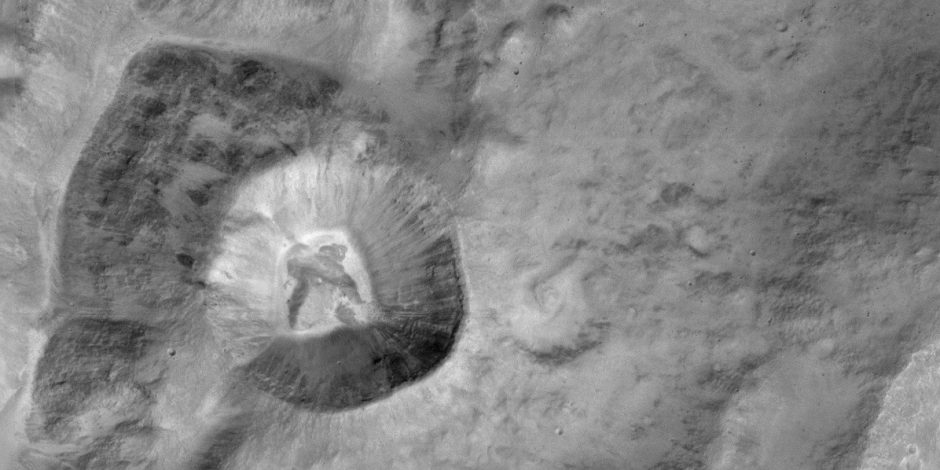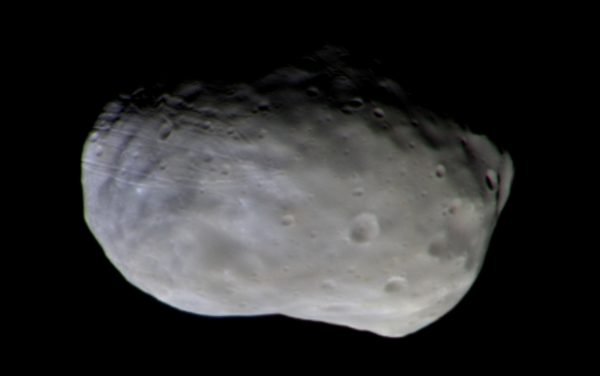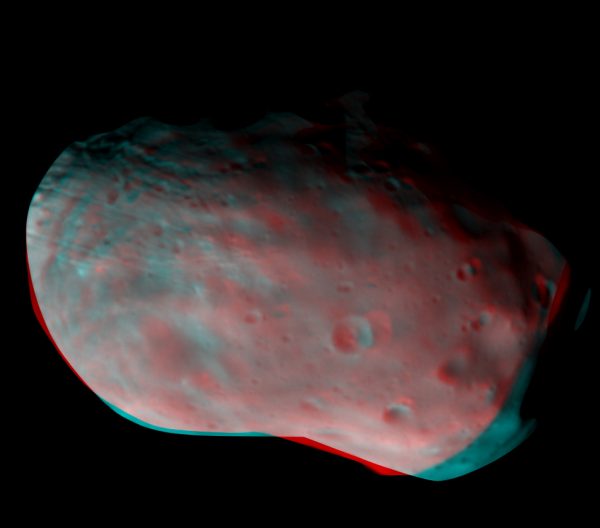Spectacular images of Mars

«We saw Hebes Chasma at 2.8 metres per pixel. That’s a bit like flying over Bern at 15’000 kilometres per hour and simultaneously getting sharp pictures of cars in Zurich,» says Nicolas Thomas, principal investigator of the Mars camera CaSSIS and Director of the Physics Institute at the University of Bern. The Bernese instrument made headlines last week when the University of Bern and the European Space Agency ESA published its first images from Mars orbit aboard ESA’s Trace Gas Orbiter (TGO).
The video shows some of the images acquired including the spectacular fly-over of the region called Hebes Chasma. This data was the highest resolution acquired by CaSSIS (Colour and Stereo Surface Imaging System) during the closest approach and is shown at half the speed at which the data were acquired. The video also illustrates how CaSSIS takes data by taking images in colour simultaneously.
On 26 November 2016, CaSSIS took aim at the Martian moon Phobos. «The images, apart from being quite pretty, have given us a lot of useful information about the colour calibration of the camera and the timing», says Nicolas Thomas. «We can see clearly the different colours on the surface. The more blue part of the surface near the largest crater, Stickney, is just visible on the left of the images and this has come out well in the colour composites we have made.»
«There are better pictures of Phobos available from Mars Express and Mars Reconnaissance Orbiter», remarked Thomas, «but this is again a good test of what can be done with CaSSIS data in a very short time. It also shows that the detector system delivered by our Italian partners is stable providing fairly straightforward calibration.» CaSSIS will now be switched off until late January or February while the TGO spacecraft is prepared for the manoeuvres to bring it towards its final orbit. During this time the science team will be looking to learn from these recent images.

Colour composite of Phobos taken with CaSSIS on 26 November 2016. The observation was made at 87 m/px from a distance of 7700 km. It is composed of several framelets that have been “stitched” together. Two of the colour filters used for CaSSIS are actually outside the wavelength response of the human eye. Hence, this is not a “true” colour image. However, showing the data as a colour representation can tell us whether the surface is redder or bluer, which can in turn tell us about the surface mineralogy (Credit: ESA/Roscosmos/CaSSIS)

Phobos in 3D: A red-blue anaglyph (to be viewed with red-blue stereo glasses) of Phobos composed from the stereo pair acquired by CaSSIS (Credit: ESA/Roscosmos/CaSSIS).
ExoMars TGO was launched on 14 March 2016 from Baikonur, Kazakhstan – a thrilling experience for Nicolas Thomas who was accompanied by a TV crew of National Geographic. «I have been thinking about ExoMars more than 16 years,» he told the journalist. Have a look at the video:
http://channel.nationalgeographic.com/mars/videos/the-launch-of-exomars/
Media release of the University of Bern, 29.11.2016
ExoMars images Phobos, ESA, 06.11.2016

